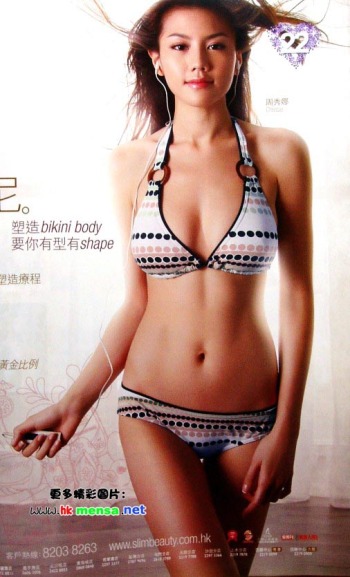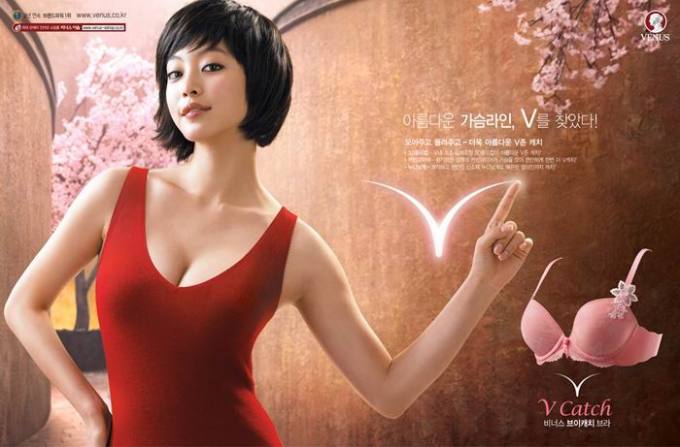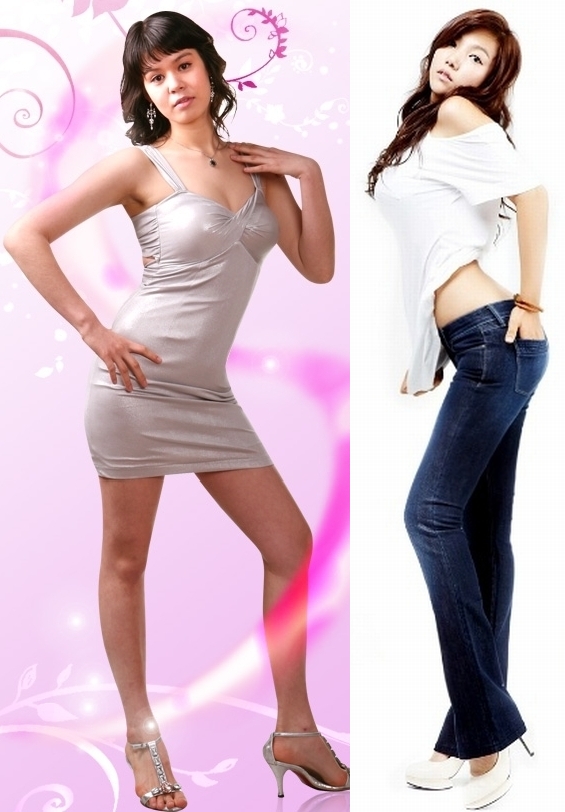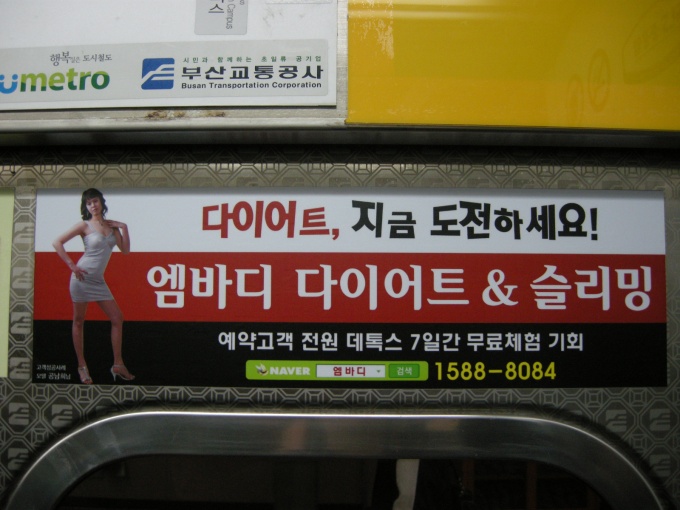How cool is it that someone so young makes a video starting like this:
Now, I’ve been here [in Hong Kong] for about…3 and a half years…and I think that if you look at common stereotypes, and you look at the way women are portrayed in the media, there are basically 3 main categories of role models for young girls to look up to. I call them: the sex-object, the virgin baby-machine, and the [bitchy] career woman. And the thing is, I can’t help but feel that it doesn’t matter which category a woman finds herself falling into…cause they all suck! And no matter what she chooses, she just can’t win!
Without deriving from her arguments, many commenters at Sociological Images note that those categories are equally valid in many other developed countries. But as pointed out by Emma, some of the things she mentions are at least more pronounced in the Northeast-Asian region:
…there are a lot of similarities between gender dynamics in HK and many other places in the world, but I do feel the dictate of virtue/virginity is especially strong here, along with a notion of ‘cuteness’ which I do not really recognize from Europe. I would say that the ‘sex babe’ model is not really something you see played out that much in daily life – it’s mostly confined to celebrity culture…
…I also know women from Japan and Korea, who tell me it is still very difficult for many women to balance between having a career and being ‘the good wife’, meaning a modest and submissive mother who mainly spends her energy on the family and the home-sphere.
 ( Source: p. 13 of my copy of 살아있는 한국어 [한자성어] )
( Source: p. 13 of my copy of 살아있는 한국어 [한자성어] )
Focusing on Korea in this post, see here for the strength of that “dictate of virginity”, and here, here, and here for more on how a very gendered notion of cuteness pervades Korean popular culture (although it does also affect men to a certain extent).
I broadly concur with Emma’s description of the Korean concept of the “good wife” too, but I’d add that the specific Korean term for that – hyeonmo-yangcho (현모양처; literally “wise mother good wife”) – very much predates the notion of working women within the confines of a nuclear-family and capitalist system (it’s actually derived from Chinese characters), and consequently is much more antithetical to the notion of working mothers than she makes out. Despite that, it’s still very much used and espoused to by many Korean women today, and this is surely at least one factor in Korea having one of the lowest female workforce participation rates in the OECD.
Much more interesting for me personally given my own interests in advertising though, were her comments about slimming advertisements by langmo (literally teen models: see here, here, and here), which she discusses from 1:08-1:58 in her segment on “the sex object”:
If you’ve been to Hong Kong, then you probably know what I mean by “the sex object”. For example, if you go into any MTR station, or if you take the bus, or if you pick up any tabloid or magazine, then you’ve probably seen a ridiculous number of slimming-centric advertisements. Usually, these ads feature hot girls with really, really big boobs…probably not that different from slimming ads in your own country. But in my opinion, you know, slimming ads in Hong Kong are NOT just slimming ads. I mean, they don’t just like, lower your self-esteem by making you feel incredibly fat…but they also play a very big part in mainstreaming the sexual objectification of women. And this is especially so because they tied up with, like, the langmo, or like young model culture in Hong Kong.
 And commenter Syd does a great job of putting those ads into context (source, right):
And commenter Syd does a great job of putting those ads into context (source, right):
I will agree with what many people are saying when they mention that in general, it’s pretty much the same was in the US, UK, New Zealand, etc. However, without being very versed in Hong Kong culture, I can see that in her examples there are at least slight differences in the values espoused. Most noticeably the ‘slimming ads.’ Of course, we get bombarded with ads for diet pills, machines, techniques, and more in the US as well (any female with a facebook knows that), but there is a distinct difference between the ads she showed and the ads I see on my facebook sidebar or on daytime TV. I very rarely see an American diet ad that is ACTIVELY selling sex (Anna Nicole Smith’s old Trimspa ads exempt, and that could arguably just being a play on her raunchy public persona). Yes, the woman will likely be shown in a swimsuit, and the word ‘sexy’ may be used, but the imagery is overall different. In American ads, there are usually before and after pictures, and possibly more dynamic pictures if it is for exercise rather than diet (ex; a woman smiling and lifting weights), and most drastically, as the rest could be chalked up to aesthetic differences, the implication is that being thin will make you healthy and happy in addition to good-looking. Most American diet ads are also quite clearly aimed at women.
In comparison, the Hong Kong ads shown in the video:
…don’t actually look much of anything that reminds me of diets (of course, that is my media exposure as an American). The poses the model is in, the fact that the model seems to be similar to the UK’s glamour models (while American ads focus on either celebrities or ‘real life’ women), and the general composition of the posters reminds me more of advertisements I’ve seen for night clubs, gentlemen’s clubs, and blowout parties than advertisements selling a particular product, or perhaps those ads for women’s clothing that seem inexplicably aimed at men. The ads are selling the same products and the idea that ‘it’s good to lose weight and be thin,’ but there also seem to be different motivations behind WHY it’s good to be thin. While that doesn’t sound like it would make that big of a difference, personally, I think it’s interesting to see even these small differences.
I agree, but just how representative are those of Hong Kong slimming ads as a whole? Judging by the surprised reactions of numerous male bloggers to them (albeit without – grrr – providing decent quality and/or non-copyrighted examples), then I’d argue that they’re actually exceptional. And if so, then one mild of criticism GennieOnline was that it was misguided of her to build that categorization of female role models on so few examples.
But where on Syd’s continuum do Korean slimming ads lie? Just 2 minutes on Naver revealing them to be as diverse as the related products and services available themselves however, then let us consider ads that feature idealized, Romanized “lines” for women’s body shapes instead, as discussed here, here, here, here and here:
 ( Source )
( Source )
By definition, the most popular of those lines – the S-line – is just as sexually-objectifying and designed for the male gaze as langmo ads are; after all, according to one blogger, the term literally means “ample breasts and buttocks when viewed from the side” in English, and I’d be lying if I pretended that I can think of anything else when I see that screenshot of Go A-ra (고아라) above. Indeed, I’d argue that the cruder “tits and ass” would be a much more appropriate term given the tabloidish contexts in which it is usually referred to too.
But ads that “remind [you] more of advertisements for night clubs, gentlemen’s clubs, and blowout parties than advertisements selling a particular product, or perhaps those ads for women’s clothing that seem inexplicably aimed at men” S-line ads definitely are not. Instead, they seem overwhelmingly marketed towards women, albeit with the fact that women should aspire to have a (male-gaze driven) S-line taken as a given, the video commercial below being a good – and probably surprising – example of that:
 ( Source )
( Source )
Granted, of course male viewers are also affected by such ads, and consequently be more likely to also judge women’s body shapes in such terms. But when you switch on the TV and see scores of women literally personally encouraging us to do so (see comment #21), for reasons explained here and here, then I’d argue that in Korea at least, popular culture is at least if not more repsonsible for that than advertising.
Moreover, that these ads are designed for female audiences seems even truer for ads for products associated with the plethora of other lines too, which is no great surprise seeing as they have no basis whatsoever in men’s biologically-driven female body preferences. Which by coincidence, was indirectly demonstrated to me by my male students just this week, fully half of whom mentioned an S-line in response to the inane question of “What do you think your date should look like” that was in their final oral test (even though I’d specifically told them not to use Korean, and to demonstrate to me that they’d learned the English words I’d taught them). In contrast, not a single one mentioned any other lines.
And finally, there’s the commercial origins of all the lines in the first place, which make this even clearer. For instance, as I mentioned in my presentation at Wellesley College last month, from which the following series of images was taken, one is the V-line for one’s face:
 ( Source )
( Source )
But then here’s another contender for the term, appropriately enough from the Venus (비너스) lingerie company:
 ( Source )
( Source )
In addition to both of those, pay particular attention to the Y-line and M-line in the diagram below:
 ( Source: unknown )
( Source: unknown )
As while you can see that that particular Y-line appears to be something to do with the back, apparently there’s another which appears to be something to do with the neck:
 ( Source: unknown )
( Source: unknown )
And yet there’s still one more, for a by now very familiar part of the body, and explicitly in competition with Venus. No great surprise as to the first letter of the company promoting this use of the term:
 ( Source: unknown )
( Source: unknown )
Let’s not forget W Korea Magazine and its promotion of the W-line either:
 ( Source: unknown )
( Source: unknown )
Albeit strictly speaking, W Korea didn’t invent that particular term itself, and it was more likely the creation of this chain of cosmetic surgery clinics in Busan:
 ( Source: unknown )
( Source: unknown )
And finally, you may recall that the M-line was originally for men. So what’s this below?
 ( Source: unknown )
( Source: unknown )
In that case, I’d argue that the M-line for men has been superseded by the the new buzzword “chocolate abs” (초콜릿복근), as discussed here. and I could (and did) go on with many many more examples, but I’m sure you get the point: all of these lines are clearly being created entirely for the sake of selling products that will supposedly help you attain them. And with the vast majority of the lines being for women’s bodies, then like I said, naturally women are overwhelmingly the target audience for them.
Of course, I’m sure that most of you knew that well before reading this post. But hopefully, it does make the possibility that such ads are actually being aimed more and more at men over time more interesting. And which ironically, is a trend I only noticed after seeing this ad for MBody Diet and Slimming Center (엠바디 다이어트 & 슬리밍) on the subway last week, even though it probably isn’t actually aimed at men:
Blame this post on that ad: I was struck by the model’s expression, which I found somehow lifeless, cynical, and jaded all at the same time, as if she was well aware that nobody would be focusing on her face. True, that may have been reading too much into it, and an image below from the website shows that she was rather more lifelike than she originally appeared.
But in combination with the wooden way in which she’s standing in order to show off her S-line – breasts thrust out like a figurine on the front of a ship (like Go A-ra); buttocks thrust back; the hip-pop; the “bashful knee bend“; and so on, then to me she appears almost as a caricature of herself, eerily reminiscent of children’s pictures of people created by cutting and pasting body parts of people from different magazines together.
With that frame of mind, then I’m sure you can appreciate why a comment by reader “sunwritesthings” received shortly after would really strike a chord with me:
…The V-line, S-line (and so forth) phenomenon is in fact very similar to what we call fragmentation of the female body in the American pop culture. In music videos, you’ll often find that the camera will focus only on certain parts of the female bodies, showing only the “objects” of interest of the viewer (assumed to be young males) rather than people. By focusing only on the line that the torso and the lower body creates, rather than the body as a whole, they’re sending the message that this female body does not need anything other than sexual attention.
Granted, I may simply be latching onto the term “fragmentation”, very apt for what I’m describing. But either way, I have been seeing more and more ads like it recently, although in fact it may already been going on for some time:
 ( “passing by” by David Smeaton; reproduced with permission )
( “passing by” by David Smeaton; reproduced with permission )
And in particular ,it is epitomized by actress Lee Chae-young (이채영) on the right below, whose recent ads for AppleHip Korea seem more worthy of Maxim than anything women might actually be interested in. See galleries by the advertisement photographer here to see what I mean, particularly this one.
 ( Sources: left; right unknown )
( Sources: left; right unknown )
And on that note, I both praise and silently curse GennieOnline for ruined my posting schedule and making me think so much this week, and throw the floor open to readers’ own thoughts on the target audience(s) of Korean slimming ads, on how they make you feel, and if and how you also think they’ve been changing. And please: with my own conclusion being such a speculation, then don’t feel inhibited from making your own!^^
Filed under: Body Image, Dieting, East Asia, Korean Advertisements, Sex in Advertising Tagged: Chocolate Abs, 고아라, 賢母良妻, Go A-ra, Hong Kong, 현모양처, 이채영, 초콜릿복근, Langmo, Lee Chae-young, S-line, S라인, wise mother good wife







Recent comments